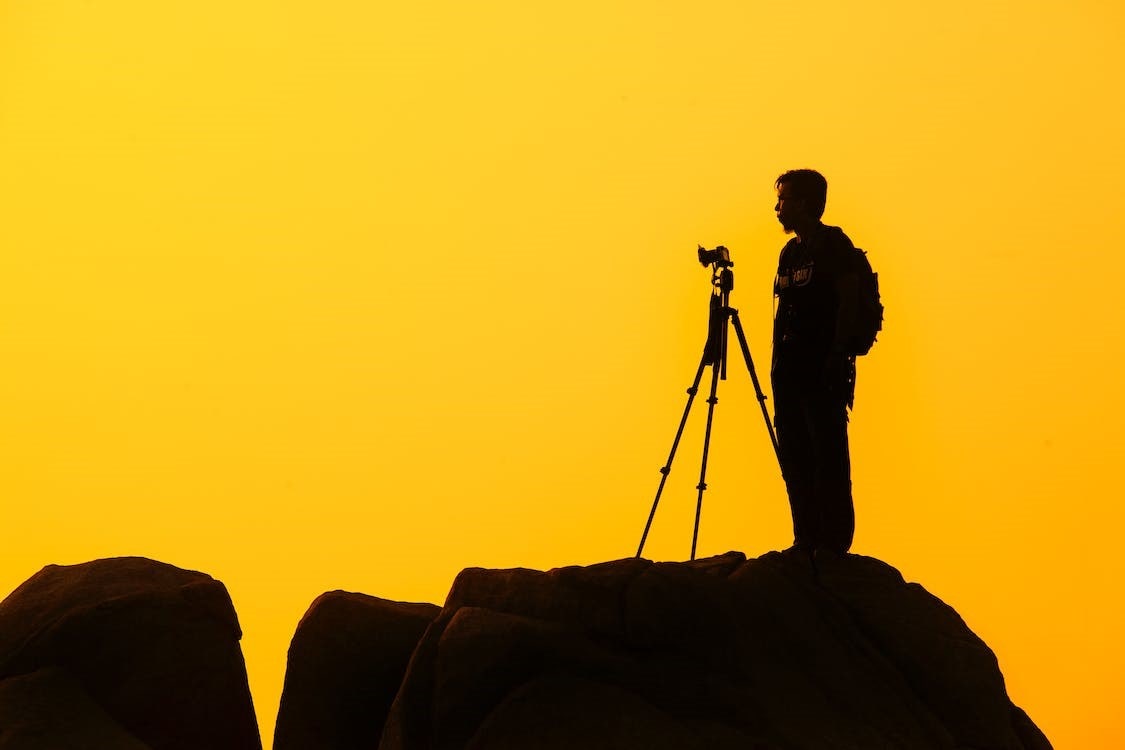Learning photography is about more than just mastering the art of capturing images; it’s about diving into a world where technology meets creativity, where every snapshot tells a story, and where light and shadow play on the canvas of reality.
A BFA in Photography offers a profound exploration of both the technical aspects and the conceptual depth of Photography.
Students learn to wield their cameras as tools of expression, exploring the nuances of composition, lighting, and editing to create impactful images.
But a BFA in Photography goes beyond the camera.
This degree opens doors to many opportunities where passion for Photography can become a professional pursuit.
Let’s uncover the paths you can take with a BFA in Photography.
1. Portrait Photographer
Portrait photography is an intimate exploration of personality, character, and emotion.
This career path allows you to capture the essence of an individual, whether it’s through candid shots, family portraits, or professional headshots.
Portrait photographers must master making their subjects feel comfortable and natural before the lens, achieving a genuine expression that speaks volumes.
This field blends technical skills with interpersonal understanding, offering a deeply personal and rewarding career.
Portrait photographers create lasting memories and artful representations of their subjects’ lives, whether in a studio, on location, or in clients’ homes.
Success here relies on your technical prowess and your ability to communicate and collaborate effectively, skills that students learn while pursuing a bachelor’s degree in Photography.
2. Fashion Photographer
Fashion photography is the gateway to a world where elegance, style, and vision converge.
It’s a high-paced, glamorous field that places you at the heart of the fashion industry.
Working closely with designers, models, stylists, and makeup artists, you’ll create images that define the latest trends and showcase the beauty of haute couture.
Fashion photography isn’t just about capturing clothes; it’s about telling a story, evoking emotions, and creating an atmosphere that lifts the fashion off the page or screen.
This career path offers the excitement of runway shows, the creative challenges of editorial shoots, and the satisfaction of seeing your work in major fashion publications.
It demands a keen eye for detail, a deep understanding of fashion, and the ability to capture the essence of a moment.
3. Photojournalist
This career is about more than just taking pictures; it’s about journalism, ethics, and a commitment to portraying the world honestly and compellingly.
Photojournalists find themselves on the front lines of history, documenting everything from local events to global crises and human triumphs to tragedies.
This path requires curiosity, bravery, and compassion as you seek to inform the public and evoke empathy through your images.
It’s a career that can take you worldwide, presenting challenges and opportunities to make a significant impact through your work.
4. Portrait Photographer
Portrait photography is an intimate exploration of personality, character, and emotion.
This career path allows you to capture the essence of an individual, whether it’s through candid shots, family portraits, or professional headshots.
Portrait photographers must master making their subjects feel comfortable and natural before the lens, achieving a genuine expression that speaks volumes.
This field blends technical skills with interpersonal understanding, offering a deeply personal and rewarding career.
Portrait photographers create lasting memories and artful representations of their subjects’ lives, whether in a studio, on location, or in clients’ homes.
5. Fine Art Photographer
This career path is for those who see Photography as their medium of artistic expression, aiming to create works that provoke, challenge, or mesmerize.
As a fine art photographer, you can explore themes, experiment with techniques, and develop your unique style.
Your work might grace the walls of galleries and museums or find its place in the collections of art lovers and connoisseurs.
Success in fine art photography hinges on connecting with your audience and conveying your message through your images.
It’s a path of constant growth, exploration, and personal fulfillment.
6. Editorial Photographer
Editorial Photography lies at the intersection of art and journalism, creating images that complement and enhance the storytelling of articles, essays, and features.
Working with magazines, newspapers, and online publications, editorial photographers illustrate stories in a way that text alone cannot.
This career requires versatility, as you might be shooting a wide range of subjects, from celebrity portraits to lifestyle, from travel stories to in-depth investigative reports.
Each assignment challenges you to capture the subject’s essence and the story’s tone, making every project a unique creative journey.
Editorial Photography is not just about taking pictures; it’s about collaboration, adaptation, and the art of visual storytelling.
7. Photography Instructor
For those passionate about sharing their knowledge and love for Photography, becoming a photography instructor offers a fulfilling career path.
Whether teaching at a high school or college or through workshops and online platforms, instructors can shape the next generation of photographers.
This role requires a deep understanding of photographic principles, techniques, and history and the ability to communicate effectively and inspire your students.
Teaching photography is more than just passing on technical skills; it encourages creativity, critical thinking, and a lifelong passion for the art.
As an instructor, you’ll be satisfied seeing your students grow, develop their unique voices, and succeed in their photographic endeavours.
8. Graphic Artist
Pursuing a Bachelor of Fine Arts (BFA) in Photography lays a robust foundation for students aspiring to become graphic artists.
This degree hones their ability to think visually and conceptually, skills that are crucial in the realm of graphic design.
Through coursework focused on composition, colour theory, and digital imaging, students learn to create compelling visuals, a core competency in graphic artistry.
Photography students also become adept at using advanced software tools like Adobe Photoshop and Illustrator, which are instrumental in graphic design.
The critical thinking and project management skills developed during a BFA program enable students to execute projects from concept through completion, a vital process in graphic design.
Moreover, the emphasis on developing a unique artistic voice prepares students to innovate and stand out in the competitive field of graphic arts.
Conclusion
A Bachelor of Fine Arts in Photography opens possibilities for creative expression and professional growth.
Whether you’re drawn to the excitement of fashion photography, photojournalism’s storytelling power, fine art’s creative freedom, or the educational impact of teaching, there’s a path for every passion.
Each career option offers unique challenges and rewards, allowing you to use your skills, creativity, and vision to make a mark.
Remember, success in Photography is not just about what you see through your lens; it’s about how you interpret it, bring it to life, and connect with others through your images.
With dedication, perseverance, and a continuous desire to learn and evolve, you can build a fulfilling career that reflects your passion for Photography.
Awesome one; I hope this article answers your question.
Editor’s Recommendations:
- Top Canon Photography Classes Everyone Should Take
- 5 Best Photography Schools in California (FAQs)
- 5 Best Photography Schools in Texas (Career, FAQs)
- Is Learning Out of School Worth it? (Yes/No, Reasons)
- Difference Between a Journalist and Reporter (Meaning, FAQs)
- Cinematographer vs. Cameraman (Meaning, Simi, Diff, FAQs)
If you find this article good, please share it with a friend.



